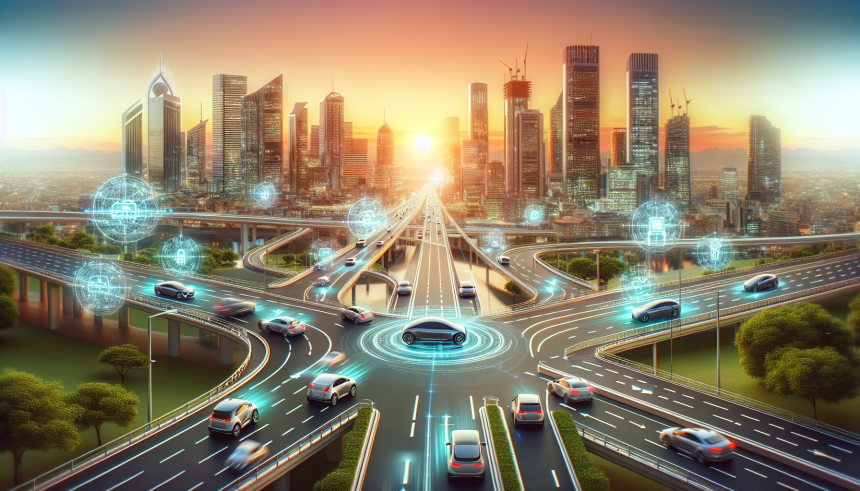Autonomous Vehicles: The Latest Updates on AI in Transportation
Current State of Autonomous Vehicle Technology
The landscape of autonomous vehicles (AVs) is evolving rapidly, with breakthroughs in artificial intelligence (AI) enhancing the capabilities and safety of self-driving technology. Major players like Waymo, Tesla, and Cruise have significantly advanced their algorithms, neural networks, and sensor technology, making strides toward fully autonomous transportation solutions.
AI Algorithms and Machine Learning Advancements
Machine learning remains the backbone of current AV technology. Neural networks are being employed to process vast amounts of data collected from various sensors, including LiDAR, radar, and cameras. These algorithms enable vehicles to recognize and interpret their surroundings, identifying pedestrians, cyclists, traffic signals, and obstacles. Continuous advancements in unsupervised learning and reinforcement learning techniques are improving the decision-making processes within AVs, allowing for better prediction and adaptation to dynamic environments.
Regulations and Safety Standards
As AV technology progresses, so does the necessity for regulatory frameworks. The National Highway Traffic Safety Administration (NHTSA) is actively developing guidelines to ensure safety in AV deployment. Recent updates have focused on creating a standardized testing framework for AVs to ensure consistency. There are ongoing discussions regarding the need for real-time data sharing among AVs to enhance situational awareness. Consequently, companies exploring interoperability are likely to set new industry benchmarks.
Collaborative Efforts and Partnerships
Partnerships between automotive manufacturers, tech companies, and public sectors are increasingly common. Ford and Argo AI, for example, are collaborating to scale up their AV testing and deployment efforts. Similarly, Waymo has joined forces with automotive giants like Chrysler to integrate AV technology into mass-market vehicles. These collaborations not only expedite technology adoption but also enhance public trust through proven reliability.
Infrastructure Development for Autonomous Vehicles
Smart cities are emerging as critical players in the deployment of AVs. Cities leveraging intelligent transportation systems (ITS) are optimizing traffic flow and communication through connected infrastructure. Initiatives such as dedicated AV lanes and vehicle-to-infrastructure (V2I) communication are on the rise. These efforts improve traffic management, reducing congestion and accident risks while fostering a safer environment for AV operation.
The Role of 5G Technology
5G technology is pivotal in the evolution of AVs, offering ultra-reliable low-latency communication (URLLC). This capability is crucial for real-time data exchange between vehicles and infrastructure, enhancing navigation and situational awareness. The integration of 5G networks can also foster advancements in remote vehicle diagnostics and troubleshooting, allowing manufacturers to address issues swiftly and efficiently.
Ethical Considerations and Public Perception
With the promise of autonomous vehicles come significant ethical dilemmas. The “trolley problem” poses challenging decisions regarding AI decision-making in emergency scenarios. Furthermore, public perception plays a vital role in the acceptance of AV technology. Surveys indicate that while interest in AVs is high, concerns about safety and cybersecurity risks remain prevalent. Ongoing education initiatives are essential to address these concerns directly.
Insurance Implications and Liability Issues
The advent of autonomous vehicles raises pressing questions regarding liability and insurance. Traditional insurance models may require significant adjustments to accommodate vehicles that operate independently of human drivers. Experts advocate for usage-based insurance models that account for driving behavior and vehicle performance over historical data. Insurers must work closely with manufacturers to develop policies reflecting the new operational realities of AVs.
Environmental Impact of Autonomous Vehicles
Autonomous vehicles also hold potential environmental benefits. Optimized route management and smooth acceleration patterns contribute to reduced fuel consumption and emissions. Electric AVs, combined with AI reserve strategies, can lead to greener transport solutions. Researchers are exploring the synergy between AI technologies and sustainable practices to further decrease the carbon footprint of transportation systems.
Consumer Adoption Trends and Market Predictions
Recent market analyses predict a significant shift toward widespread AV adoption by 2030. Increased consumer interest, driven by convenience and evolving urban infrastructures, will likely catalyze this transition. Subscription-based AV ownership and shared mobility services are projected to gain traction, as urban dwellers seek cost-effective alternatives to traditional car ownership.
Challenges and Limitations
Despite the advancements in AV technology, several challenges remain. Adverse weather conditions, such as rain or snow, continue to impede sensor performance. Additionally, cybersecurity vulnerabilities pose a serious threat as vehicles become increasingly interconnected. Developers are engaged in finding solutions that enhance resilience against potential hacks and threats.
Global Perspectives and International Developments
Countries around the world are at various stages of AV integration. In Europe, countries like Germany and France are investing heavily in AV infrastructure and legislation. In Asia, China is leading with aggressive government-backed initiatives aimed at becoming a global leader in AV technology. These international efforts underline the urgency of collaboration and standardization across borders.
Future Directions in Autonomous Vehicles
Looking ahead, the future of AVs appears promising. Developments in AI, such as better prediction algorithms and enhanced sensor fusion techniques, will drive efficiency and safety in AV operations. Exciting prospects include the integration of AVs in public transport and logistics, where they can take over last-mile delivery challenges.
Conclusion
As the autonomous vehicle sector continues to develop, staying informed about technological advancements, regulatory shifts, and ethical considerations is crucial. The interplay between AI advancements, consumer dynamics, and infrastructure improvements will shape the future landscape of transportation. Both individuals and businesses must adapt to these changes for a sustainable, safe, and efficient transportation ecosystem.


